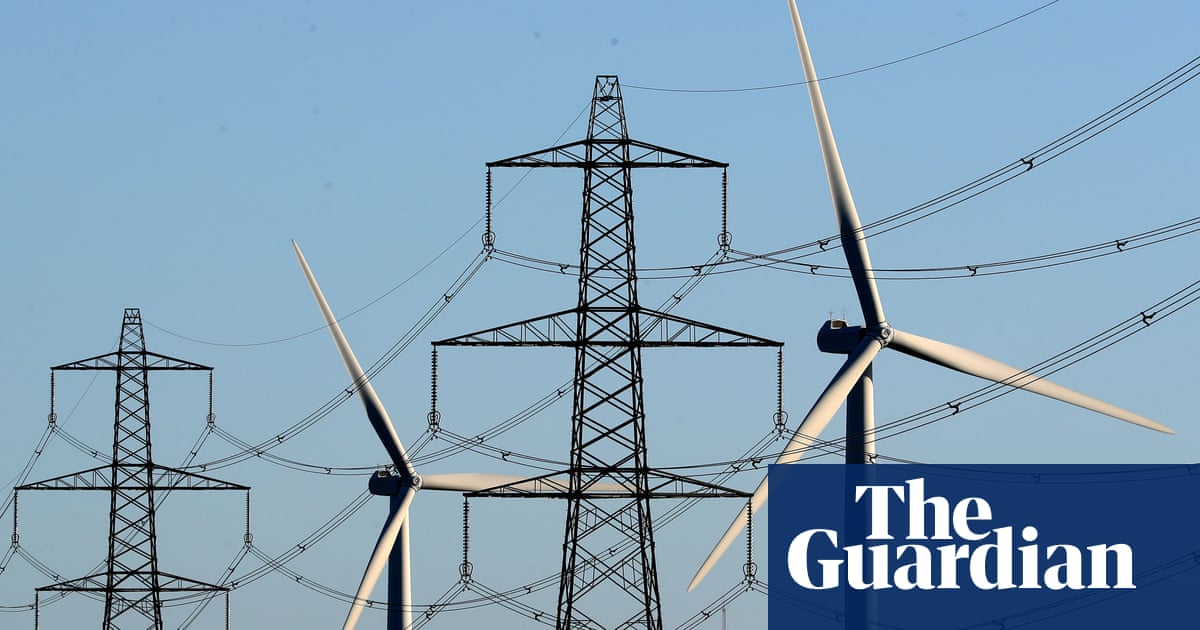
The anticipated £58 billion project to upgrade the electricity grid in Great Britain in order to link new offshore windfarms off the Scottish coast may cause conflicts with residents along the path.
National Grid’s ESO has created a plan for power “highways” throughout the UK to enable the largest investment in infrastructure since the 1960s.
The recently proposed “blueprint” suggests an onshore “high-capacity electrical backbone” that would run from the northeast of Scotland to the northwest of England, in addition to a complex system of cables along the coastlines.
Four land-based wind farms will be linked along a path from Peterhead located in the northern region of Scotland to Torness in the southeast of the nation. Submerged cables will be utilized to connect these wind farms to Lincolnshire and Kent.
In 2022, the ESO announced a plan worth £54 billion to link 23GW of offshore wind energy. This blueprint is expected to allow for an additional 21GW, thanks to a leasing round for developers constructing projects on the seafloor which is overseen by the crown estate Scotland, responsible for managing land and property owned by the monarchy in Scotland. The profits earned are then given to the Scottish government.
Government officials are currently working on reorganizing the power grid in response to ongoing changes in the location of power generation in Great Britain. Originally designed in 1935 with a focus on coal and centered around industrial hubs in Yorkshire, Nottinghamshire, and the north-east, nuclear energy now also plays a crucial role.
The movement towards cleaner energy and the expansion of the offshore wind sector have increased the importance of establishing strong links between Scotland’s east coast and the major cities of England, where there is the highest demand.
Scotland already generates nearly 15GW of renewable power, far outstripping the peak winter Scottish demand of 5GW, and the government has suggested offering reduced bills to areas where demand is lower than supply.
In the previous year, the government announced that properties in close proximity to new transmission infrastructure could potentially get a discount of up to £1,000 per year on their electricity bills for a period of 10 years.
The ESO was pleased with the government’s proposal to provide “monetary benefits” to communities hosting energy projects. However, there are concerns about whether this would successfully reduce local resistance.
The changes to the network could have political consequences. The leader of the Labour party, Keir Starmer, has promised to take a strict approach towards citizens who oppose the installment of onshore wind turbines. The Labour party’s plan to reduce carbon emissions from the grid by 2030 is reliant on timely completion of projects. The government aims to achieve the same goal by 2035.
Tom Burke, the head of the E3G organization, doubts that the rewards will have an impact. He stated that individuals have varying perspectives on their way of living and financial status. As an example, the HS2 project reveals that positions or policies that do not align with people’s desires will inevitably have a political cost.
Josh Buckland, a consultant at Flint Global and former advisor for energy at the Department for Business, Energy and Industrial Strategy, believes that solely relying on financial incentives will not be sufficient in avoiding local opposition.
Last month, The Guardian reported that the ESO was developing a blueprint that includes a proposed “connections hub” near Lincolnshire in order to minimize the effects on protected marine areas along the East Anglia coast. There has been strong resistance to electricity projects in this region.
Pass over advertisement for newsletter.
after newsletter promotion
By 2035, the ESO plans to lay three times more undersea cables than onshore infrastructure and expects this project to generate a £15bn boost to the economy, resulting in the creation of 20,000 jobs annually.
The bulk of the ESO’s plan will be carried out by the three transmission companies: National Grid Electricity Transmission, SP Transmission and Scottish and Southern Energy Networks Transmission.
The expense of reducing carbon emissions and achieving net zero has become a topic of discussion, especially as the renewable energy sector experiences challenges with supply chain disruption and increased expenses.
Last week, Ofgem, the energy regulatory body, expressed worry about the potential disproportionate financial burden on lower-income households in achieving net zero goals.
According to Buckland, any upcoming administration will need to determine how the expenses of significant infrastructure projects will be covered, either through taxes or fees for consumers. They must also consider providing safeguards for households in need. Currently, individuals pay between £20 and £30 annually for network expenses with their consumer bills.
According to Burke, implementing wise strategies such as prioritizing home insulation, utilizing community schemes, and adopting battery technology will cause a slight increase in bills. However, if we make unwise decisions such as focusing on nuclear power projects with delayed progress, the increase in bills will be greater.
Nick Winser, a commissioner at the National Infrastructure Commission who advised the government on accelerating new electricity infrastructure last year, said: “Transformational investment in the electricity network is needed to ensure we can make the most of low-cost, low-carbon wind power. Getting this right will help to reduce energy bills for consumers and enable the deployment of electric vehicles and heat pumps.
“It is crucial that this investment is delivered promptly.”
Source: theguardian.com



